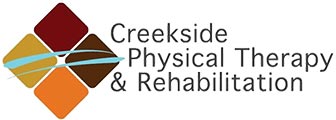Meniscus injuries are one of the most common injuries that take place in the knee, and are often associated with injuries to other structures in the knee including the anterior cruciate ligament (ACL) (2). There are two different ways to differentiate injuries to the meniscus: meniscus tears vs meniscus lesions. Meniscus tears are acute, traumatic injuries that often occur when there is a rotation force in the knee, such as sudden change in directions in sports or an external force causing the knee to rotate. Meniscus lesions are the result of degeneration and occur over longer periods of time, and is associated with osteoarthritis and knee pain in older adults (3,6). Research has shown that the presence of these injuries can hasten cartilage wear and degeneration, as well as result in long-term loss of function (3).
Anatomy of the Knee & Meniscus
 The menisci are fibrocartilage wedges that sit between the femur and tibia of the lower extremity. These structures are designed to absorb loading forces in the lower extremity and provide stability to the knee joint (3). The menisci can be further divided between the medial and lateral meniscus. The medial meniscus is the larger and more stable of the two, whereas the lateral meniscus is smaller and has more movement during full range knee motion (3). There is often thought of different zones of vascularity in the meniscus, where the inner portions of these pads have reduced blood flow compared to the outer portions. In general, the areas with increased perfusion have an increased likelihood of healing vs the inner layers with decreased blood flow (2,3).
The menisci are fibrocartilage wedges that sit between the femur and tibia of the lower extremity. These structures are designed to absorb loading forces in the lower extremity and provide stability to the knee joint (3). The menisci can be further divided between the medial and lateral meniscus. The medial meniscus is the larger and more stable of the two, whereas the lateral meniscus is smaller and has more movement during full range knee motion (3). There is often thought of different zones of vascularity in the meniscus, where the inner portions of these pads have reduced blood flow compared to the outer portions. In general, the areas with increased perfusion have an increased likelihood of healing vs the inner layers with decreased blood flow (2,3).
Does a Meniscus Tear Make the Knee "Lock?"
When there is damage to these structures, there is often pain, instability, and sometimes a sense of locking or catching when moving through the joint's range of motion. As mentioned, meniscus lesions occur over time, with 35% of those over the age of 50 having evidence of meniscus damage. However, two out of three of these individuals do not necessarily have pain (1). Furthermore, 75% of those with symptomatic knee osteoarthritis have been shown to have meniscus lesions (3).
Meniscus tears, or acute meniscus injuries, can be divided into stable vs unstable injuries. Unstable meniscus tears are when the central part of the tear is dislocated towards the joint space. This results in the locking or catching sensation that is often associated with these injuries. Stable tears are non-displaced and do not have the same catching sensation (2). There are several treatment options for these acute injuries, including meniscus repair, partial meniscectomy, and conservative management.
Meniscus Injury Management
Surgical Options
 Meniscus repair is a surgery to correct the tearing in the meniscus and preserve as much tissue as possible. The benefits of this surgery is that long-term degeneration and loss of function is significantly reduced compared to other treatment options (2,3,5). The recovery times for these surgeries is much longer, however, with a full return to prior activities taking 6+ months or longer.
Meniscus repair is a surgery to correct the tearing in the meniscus and preserve as much tissue as possible. The benefits of this surgery is that long-term degeneration and loss of function is significantly reduced compared to other treatment options (2,3,5). The recovery times for these surgeries is much longer, however, with a full return to prior activities taking 6+ months or longer.
Partial meniscectomy is different from a repair in that the torn tissue is cut and removed from the knee. These surgeries generally take much less time to recover, around 2-4 weeks, but are often associated with long-term effects such as increased likelihood of degeneration and possibility of needing a total knee replacement (2,3).
Non-Surgical Options
Conservative management of meniscus injuries involves physical therapy, and is an option for those with smaller tears, significant degeneration, or that are not a candidate for surgery based on other medical considerations (3). Short term comparisons of around 12-24 months show no significant difference between partial meniscectomy vs conservative management (6), with this trend continuing for up to 5 years (4), with both treatment options proving to improve function and pain compared to baseline. However, most research agrees that repairing the damaged tissue is recommended whenever possible to improve the long-term outcomes and function.
Regardless of the treatment approach, physical therapy will be an important part of the rehabilitation process. Defined protocols are part of repair process, and provide important benchmarks for healing and function. With conservative management, there are several stages to progress through with returning to full function, focusing on improving muscular strength and coordination and establishing pain-free range of motion (1).
How Physical Therapy can Help Your Meniscus Related Knee pain
Our physical therapists at Creekside can help you recover or rehabilitate from your meniscus injury. They will assess your entire lower extremity and hips to address dysfunction, imbalance, and pain. They will work with you to develop a plan to return to walking, running, and participating in daily life and sporting activities. This plan includes but is not limited to:
-
Kinetic chain assessment:
![kinetic chain assessment]()
-
The muscles and structures of the knee are not the only considerations when dealing with knee pain; the ankles, hips, and core all play a role in maintaining strong and stable knees.
-
-
Hands on treatment to decrease pain:
![knee iastm]()
-
Instrument Assisted Soft Tissue Mobilization (IASTM) is effective at improving muscle & fascial mobility throughout the knee and entire lower extremity. This can decrease how much 'tightness' and pain you feel with moving your knee.
-
Myofascial decompression techniques (MFD) helps to increase the mobility of the layers of connective tissue through the lower extremity. This decompressive technique can improve the mobility and tolerance for movement in the tissue surrounding the knee and associated tissue chains.
-
-
Exercise to strengthen the lower extremity:
-
Strengthening the muscles of the lower extremity is an important component to increase the function and stability in the knee.
-
-
![BFR lunge]() Blood-Flow Restriction (BFR) Exercise Therapy:
Blood-Flow Restriction (BFR) Exercise Therapy:-
BFR simulates higher intensity tendon strengthening exercises without requiring high intensity tendon loading. It can increase muscle and tendon strength faster than traditional exercise (and oftentimes with less exercise-related pain as well. Click here to read more about how BFR is a safe and effective way to speed up your rehab.
-
-
Taping for stability:
-
Taping interventions can temporarily improve stability and restore proper mechanics in the knee.
-
Our experienced physical therapists will be able to guide you in your recovery and provide you with the resources to reduce your pain, improve function and stability in the knee, and return to the activities you love most.
Creekside Physical Therapy Now Has 3 Convenient Locations in Portland, Oregon
Message us now to get scheduled with one of our skilled Physical Therapists at any of our locations:
-
Tigard - Oleson: 9115 SW Oleson Rd, Ste. #206 Portland, Oregon, 97223
-
Tigard - Locust: 9445 S Locust St., Tigard, Oregon, 97223
-
Cedar Mill: 12400 NW Cornell Rd, Ste. #200 Portland, Oregon, 97229
References
-
Katz JN, Brophy RH, Chaisson CE, de Chaves L, Cole BJ, Dahm DL, Donnell-Fink LA, Guermazi A, Haas AK, Jones MH, Levy BA, Mandl LA, Martin SD, Marx RG, Miniaci A, Matava MJ, Palmisano J, Reinke EK, Richardson BE, Rome BN, Safran-Norton CE, Skoniecki DJ, Solomon DH, Smith MV, Spindler KP, Stuart MJ, Wright J, Wright RW, Losina E. Surgery versus physical therapy for a meniscal tear and osteoarthritis. N Engl J Med. 2013 May 2;368(18):1675-84. doi: 10.1056/NEJMoa1301408. Epub 2013 Mar 18. Erratum in: N Engl J Med. 2013 Aug 15;369(7):683. PMID: 23506518; PMCID: PMC3690119.
-
Kopf S, Beaufils P, Hirschmann MT, Rotigliano N, Ollivier M, Pereira H, Verdonk R, Darabos N, Ntagiopoulos P, Dejour D, Seil R, Becker R. Management of traumatic meniscus tears: the 2019 ESSKA meniscus consensus. Knee Surg Sports Traumatol Arthrosc. 2020 Apr;28(4):1177-1194. doi: 10.1007/s00167-020-05847-3. Epub 2020 Feb 13. PMID: 32052121; PMCID: PMC7148286.
-
Luvsannyam E, Jain MS, Leitao AR, Maikawa N, Leitao AE. Meniscus Tear: Pathology, Incidence, and Management. Cureus. 2022 May 18;14(5):e25121. doi: 10.7759/cureus.25121. PMID: 35733484; PMCID: PMC9205760.
-
Noorduyn JCA, van de Graaf VA, Willigenburg NW, Scholten-Peeters GGM, Kret EJ, van Dijk RA, Buchbinder R, Hawker GA, Coppieters MW, Poolman RW; ESCAPE Research Group. Effect of Physical Therapy vs Arthroscopic Partial Meniscectomy in People With Degenerative Meniscal Tears: Five-Year Follow-up of the ESCAPE Randomized Clinical Trial. JAMA Netw Open. 2022 Jul 1;5(7):e2220394. doi: 10.1001/jamanetworkopen.2022.20394. PMID: 35802374; PMCID: PMC9270699.
-
Petersen W, Karpinski K, Bierke S, Müller Rath R, Häner M. A systematic review about long-term results after meniscus repair. Arch Orthop Trauma Surg. 2022 May;142(5):835-844. doi: 10.1007/s00402-021-03906-z. Epub 2021 Apr 28. PMID: 33913009; PMCID: PMC8994714.
-
van de Graaf VA, Noorduyn JCA, Willigenburg NW, Butter IK, de Gast A, Mol BW, Saris DBF, Twisk JWR, Poolman RW; ESCAPE Research Group. Effect of Early Surgery vs Physical Therapy on Knee Function Among Patients With Nonobstructive Meniscal Tears: The ESCAPE Randomized Clinical Trial. JAMA. 2018 Oct 2;320(13):1328-1337. doi: 10.1001/jama.2018.13308. Erratum in: JAMA. 2018 Dec 4;320(21):2272-2273. Erratum in: JAMA. 2020 Mar 10;323(10):1001. PMID: 30285177; PMCID: PMC6583004.


.png)
.png)
 Blood-Flow Restriction (BFR) Exercise Therapy:
Blood-Flow Restriction (BFR) Exercise Therapy: